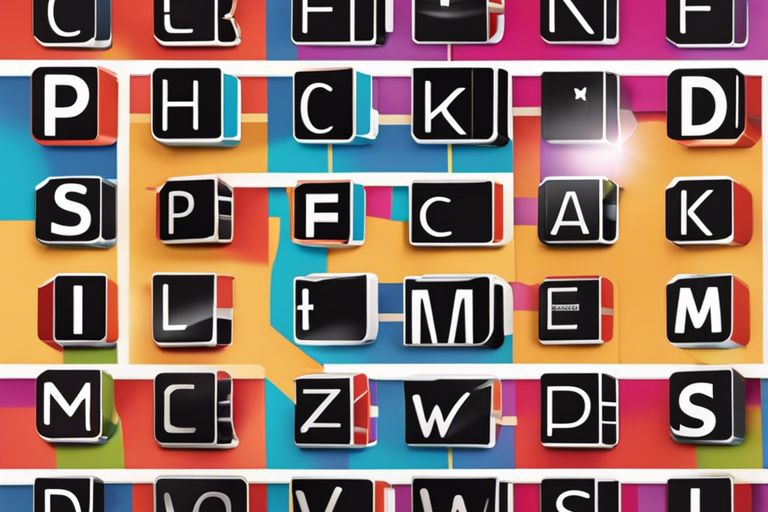Mastering phonics is vital for developing strong reading and writing skills, but it’s easy to fall into common traps that hinder progress. In this guide, we will uncover these prevalent phonics mistakes and provide clear strategies on how to steer clear of them. By understanding these errors and learning how to avoid them, you can enhance your phonics skills and pave the way for fluent and confident reading abilities. Let’s dive in and eradicate these stumbling blocks to phonics proficiency.
Key Takeaways:
- Master common phonics rules: By familiarising yourself with common phonics rules, you can avoid making mistakes in pronunciation and spelling.
- Practice phonics regularly: Regular practice of phonics can help reinforce correct pronunciation and spelling patterns.
- Be mindful of silent letters: Pay attention to silent letters in words to avoid mispronunciations.
- Use mnemonic devices: Mnemonic devices can aid in remembering tricky spelling patterns and phonetic rules.
- Seek feedback and guidance: Getting feedback from teachers, tutors, or peers can help you identify and correct phonics mistakes effectively.
Common Phonics Mistakes
Mispronunciation of Vowel Sounds
One common error in phonics is the mispronunciation of vowel sounds. Learners often struggle with distinguishing between the short and long sounds of vowels, such as mixing up ‘bed’ and ‘bead’. This confusion can hinder reading and spelling skills.
Confusion Between Similar Sounding Consonants
Another prevalent mistake is the confusion between similar sounding consonants, like ‘b’ and ‘d’ or ‘f’ and ‘v’. These errors can lead to misunderstandings in words and affect overall phonetic accuracy.
Confusions between consonants can be challenging as their sound differentiations are subtler compared to vowels. It’s crucial to practise and focus on the specific mouth formation and sound production of each consonant to avoid mixing them up.
Difficulty in Blending Sounds
Difficulty in blending sounds is a common challenge for learners. This can result in struggles when trying to smoothly join individual sounds to form words. Without mastering this skill, reading fluency can be impeded.
Blending sounds requires practice in transitioning smoothly from one sound to another without breaks or interruptions. Using tools like sound cards and segmenting words into smaller parts can enhance blending skills.
Overgeneralizing Phonics Rules
Overgeneralising phonics rules is another mistake learners tend to make. They may apply one rule universally to all words, leading to incorrect pronunciation or spelling. It’s important to understand the exceptions and irregularities in English phonics.
To avoid overgeneralising, learners should be exposed to diverse word examples and practice identifying patterns while also acknowledging exceptions. Understanding the nuances of phonics rules can significantly improve accuracy in reading and spelling.
Factors Contributing to Phonics Mistakes
Lack of Phonemic Awareness
One of the key factors contributing to phonics mistakes is the lack of phonemic awareness. Phonemic awareness is the ability to hear, identify, and manipulate individual sounds in spoken words. Without this crucial skill, children may struggle to understand the relationship between letters and sounds, resulting in difficulties with decoding and spelling.
Insufficient Practice and Exposure
Insufficient practice and exposure to phonics skills can also lead to common mistakes. Children need repeated opportunities to practice decoding words and applying phonics rules in various contexts. Without enough exposure to phonics exercises, they may not develop the automaticity needed to read and spell fluently.
Inadequate practice can hinder a child’s phonics development. Regular and varied exposure to phonics activities is necessary for reinforcing skills and building confidence in applying them to reading and writing tasks. Parents and teachers should provide consistent practice opportunities to help children become proficient in phonics.
Teaching Methods and Materials
The choice of teaching methods and materials can impact a child’s phonics learning journey. Ineffective instructional strategies or outdated materials may hinder a child’s understanding of phonics principles. It is crucial for educators to use evidence-based practices and up-to-date resources to support children in developing strong phonics skills.
The quality of teaching methods and materials plays a significant role in a child’s phonics success. Engaging and interactive approaches that cater to individual learning styles can enhance phonics instruction. Additionally, incorporating multisensory activities and digital resources can make phonics learning more enjoyable and effective for young learners.
How-to: Tips for Avoiding Phonics Mistakes
How to Cultivate Phonemic Awareness
As far as cultivating phonemic awareness in young learners, it is vital to engage them in activities that focus on sound manipulation and identification. Encourage children to listen carefully to the sounds in words, identify rhyming words, and segment words into individual sounds. Engaging in fun and interactive phonemic awareness activities can help children develop strong foundational skills for phonics and reading.
Tips for Effective Phonics Practice and Consistency
In order to effectively practice phonics skills and ensure consistency in learning, it is important to create a structured routine. Set aside dedicated time each day for phonics practice, incorporating a variety of activities such as reading phonics books, playing word games, and completing worksheets. Consistency is key in building phonics skills and reinforcing learning for young readers.
- Establish a regular phonics practice routine to reinforce learning.
- Make phonics learning engaging through games and interactive activities.
- Monitor progress and adjust activities based on individual needs.
- After consistent phonics practice, children will show improvement in reading and spelling skills.
How to Choose and Use the Right Teaching Resources
Choosing the right teaching resources for phonics instruction is crucial in supporting effective learning. Look for resources that are aligned with the phonics curriculum you are following, provide clear instructions for activities, and offer a variety of engaging materials. Utilise a combination of books, games, worksheets, and digital resources to create a well-rounded phonics learning experience for children.
- Consider the needs and learning styles of individual students when selecting resources.
- Explore online platforms and digital tools to supplement traditional teaching methods.
- Regularly evaluate and update teaching resources to keep lessons fresh and engaging.
- After incorporating a variety of teaching resources, assess which ones are most effective for your students.
Common Phonics Mistakes and How to Avoid Them
Understanding common phonics mistakes and learning how to avoid them is crucial for proficient reading and writing skills. By focusing on correct letter sounds, practising blending and segmenting words, and paying attention to silent letters and syllables, individuals can enhance their phonics abilities. Recognising the importance of phonics rules, such as vowel and consonant sounds, enables learners to decode words accurately and improve their overall literacy skills. By being aware of common mistakes, like mispronouncing sounds or ignoring letter patterns, readers and writers can prevent errors and enhance their language proficiency. Continual practice and reinforcement of phonics principles play a vital role in overcoming these mistakes and becoming confident and skilled in phonics.
FAQ
Q: What are common phonics mistakes?
A: Common phonics mistakes include mispronouncing common letter combinations, relying on sight words instead of phonetic decoding, and not understanding phonemic awareness.
Q: How can I avoid mispronouncing letter combinations?
A: To avoid mispronouncing letter combinations, practice sounding out each letter individually and then blending them together to form the correct sound.
Q: What is the impact of relying on sight words over phonetic decoding?
A: Relying on sight words over phonetic decoding can hinder reading fluency and comprehension as it does not help develop the skills needed to sound out unfamiliar words.
Q: How can I improve my phonemic awareness?
A: To improve phonemic awareness, practice activities such as segmenting, blending, and manipulating sounds in words to better understand the relationship between letters and sounds.
Q: Why is it important to address phonics mistakes early on?
A: Addressing phonics mistakes early on is crucial as it lays the foundation for strong reading and spelling skills, which are crucial for academic success and literacy development.












